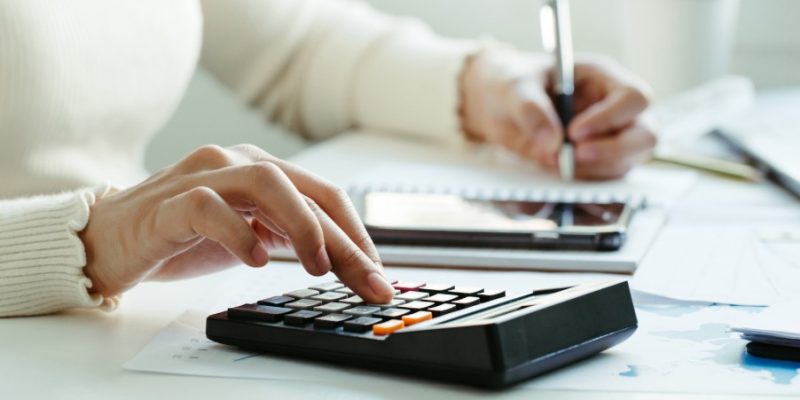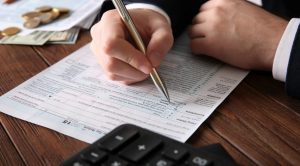
Why Has My Tax Code Changed in the UK?
Your tax code is a crucial element in determining how much tax is deducted from your income. In the UK, HMRC assigns each taxpayer a tax code that reflects their personal allowance and any additional factors that may affect their tax liability.
But what happens when your tax code changes? If you’ve recently noticed a difference in your tax code and are wondering why, don’t worry—you’re not alone. Understanding the reasons behind these changes can help you avoid confusion and ensure you’re paying the right amount of tax.
In this article, I’ll break down why tax codes in the UK might change, how to check if yours is correct, and what steps to take if it isn’t.
What Is a Tax Code in the UK?

A tax code is a combination of numbers and letters that your employer or pension provider uses to calculate how much income tax to deduct from your earnings. It serves as a guideline that tells them how much of your income is tax-free and how much is taxable.
Breaking Down the Tax Code:
Most people in the UK are assigned the standard tax code 1257L. Here’s what it means:
- The numbers (1257): This represents your tax-free personal allowance. For the 2024/25 tax year, this is £12,570, meaning you can earn this amount before paying any income tax.
- The letter (L): This signifies that you’re entitled to the standard personal allowance without any special adjustments.
However, not all tax codes are this straightforward. You might encounter other letters, such as BR, D0, or NT, which indicate different circumstances like paying tax on all your income at the basic or higher rates, or not paying tax at all. Understanding these variations can help you interpret your tax code and identify if it’s correct.
Why Does My Tax Code Change?
HMRC may update your tax code for a variety of reasons, ranging from changes in your employment status to adjustments in state benefits. Below are some of the most common scenarios that can lead to a change in your tax code:
1. Income Changes
- Starting a New Job: When you start a new job, your employer provides HMRC with details about your income. Based on this information, HMRC may adjust your tax code to reflect your new earnings. If they don’t receive this information in time, you may be placed on an emergency tax code temporarily.
- Receiving a Pay Rise or Bonus: If your salary increases, your tax code may be updated to account for the higher taxable income. This ensures you pay the correct amount of tax on your new earnings.
- Additional Sources of Income: If you take on a second job or start receiving income from a pension, HMRC will adjust your tax code to split your personal allowance across multiple income streams.
2. Benefits or Allowances Adjustments
- Taxable Benefits from Work: Perks like company cars, private medical insurance, or other employer-provided benefits are taxable and can result in a change to your tax code. HMRC adjusts your tax code to include the taxable value of these benefits, often referred to as a “benefit in kind.”
- Marriage Allowance: If you or your partner claim Marriage Allowance, your tax code will reflect the transfer of a portion of the personal allowance from one partner to the other.
- State Benefits: Receiving taxable state benefits, such as Carer’s Allowance or Jobseeker’s Allowance, may also lead to a change in your tax code.
3. Overpayment or Underpayment of Tax
- Tax Overpayment: If HMRC finds that you’ve overpaid tax in the past, they might adjust your current tax code to reduce the amount of tax deducted from your income.
- Tax Underpayment: Conversely, if you’ve underpaid tax, HMRC may reduce your personal allowance in your tax code to recover the owed amount gradually.
4. Changes in Personal Circumstances
- Marriage, Divorce, or Civil Partnership: Life changes like getting married, divorced, or entering into a civil partnership can affect your tax code, especially if you’re claiming allowances like Marriage Allowance.
- Moving into Self-Employment: Switching from employment to self-employment means you’ll pay tax through self-assessment rather than PAYE (Pay As You Earn). This change may require HMRC to update your tax code.
5. Receiving Pensions or Multiple Incomes
- Pension Income: If you begin receiving a workplace or private pension, your tax code may change to reflect the split of your tax-free allowance between your pension and any other income.
- Multiple Income Sources: Having more than one job or additional income streams can lead to adjustments in your tax code, as HMRC needs to allocate your tax-free allowance across all sources.
6. Emergency Tax Codes
An emergency tax code is a temporary measure used when HMRC doesn’t have enough information to calculate your correct tax code. These codes typically mean you’ll pay more tax until the situation is resolved. Common emergency tax codes include:
- BR (Basic Rate): You’re taxed at 20% on all your income.
- D0 (Higher Rate): You’re taxed at 40% on all your income.
- D1 (Additional Rate): You’re taxed at 45% on all your income.
How Do I Understand Tax Code Notifications from HMRC?

When HMRC changes your tax code, they send you a PAYE Coding Notice, which explains:
- Your updated tax code.
- The reason for the change.
- A breakdown of how your personal allowance has been calculated.
It’s important to read this notice carefully and check if the new tax code matches your circumstances. If you spot an error, you’ll need to contact HMRC to correct it.
How Can I Check and Correct My Tax Code?
Your tax code directly impacts how much income tax is deducted from your earnings, so ensuring it’s accurate is essential. If your tax code is wrong, you could end up paying too much or too little tax. Fortunately, checking and correcting your tax code is straightforward if you know where to look and what steps to take. Below is a detailed guide on how to check your tax code, identify potential issues, and correct errors.
Where Can I Find My Tax Code?
Your tax code is displayed on several official documents related to your income and tax payments. Here’s where you can check it:
1. Your Payslip: Your payslip (usually issued weekly or monthly by your employer) includes your tax code. It’s often located near your National Insurance (NI) number.
2. Your P60 or P45 Forms:
- The P60 is a document summarising your total income and tax paid over the tax year. It’s issued by your employer at the end of each tax year (April).
- The P45 is provided when you leave a job and shows your income and tax paid up to the point of leaving. Your P45 will also include your tax code at the time you left that employment.
3. Your Personal Tax Account: HMRC offers an online tool called the Personal Tax Account, which allows you to review your tax code, income details, and tax payments. You can access this service by logging in at UK. This is often the most convenient option as it provides real-time details.
4. HMRC’s Tax Code Notice (Form P2): When HMRC updates your tax code, they send you a PAYE Coding Notice (Form P2). This letter provides a detailed explanation of your new tax code, including how it has been calculated.
What Should I Check in My Tax Code?
Once you’ve located your tax code, it’s important to review it to ensure its accuracy. Look out for the following:
1. Numbers in Your Tax Code:
- The numbers in your tax code represent your tax-free personal allowance (e.g., “1257” means £12,570). Check if this figure aligns with your expected allowance based on your income and circumstances.
- If the number is lower than expected, it could mean HMRC has reduced your allowance to recover unpaid tax from previous years.
2. Letters in Your Tax Code:
- The letters indicate specific circumstances affecting your tax. For example, “L” means you receive the standard personal allowance, while “BR” means all your income is taxed at the basic rate (20%).
- Compare your situation with the letter used in your tax code to ensure they match (e.g., are you receiving Marriage Allowance, taxable benefits, or other adjustments?).
3. Deductions for Benefits or Other Income:
- If you receive benefits in kind (e.g., company car, private medical insurance), your tax code may be adjusted to account for these. Check if the adjustment matches the benefits you’re actually receiving.
4. Emergency Tax Code:
- Look for signs of an emergency tax code, such as BR, D0, or D1. These codes are temporary and often result in higher tax deductions. If you see these codes, it’s likely HMRC hasn’t received enough information about your income.
Steps to Correct Your Tax Code

If you suspect your tax code is incorrect, here’s how to resolve the issue:
1. Log in to Your Personal Tax Account
The quickest way to address tax code issues is through your Personal Tax Account. This secure online service lets you:
- Check your tax code and income details.
- Report changes to your circumstances (e.g., starting a new job, changes to benefits, or additional income).
- Update HMRC about incorrect details.
To access your Personal Tax Account, you’ll need:
- Your Government Gateway ID (or you can create one if you don’t already have one).
- Details like your National Insurance number and personal information.
2. Use HMRC’s Online Tax Code Tool
HMRC provides a dedicated online tool to help you check if your tax code is correct. You can access it at Check Your Income Tax. This tool allows you to review:
- How your tax-free allowance has been calculated.
- Any deductions HMRC has made for benefits or other income.
- Your expected total taxable income for the year.
3. Contact HMRC Directly
If you’re unable to resolve the issue online or need clarification, you can contact HMRC directly:
- By phone: Call the Income Tax helpline on 0300 200 3300 (for calls within the UK).
- By post: Write to HMRC and include details such as your National Insurance number, employer information, and payslips.
When contacting HMRC, be prepared to provide:
- Your National Insurance number.
- Your tax code.
- Recent payslips or P60.
- Information about any changes in your income or benefits.
4. Inform Your Employer or Pension Provider
Once HMRC updates your tax code, they will notify your employer or pension provider. However, it’s a good idea to confirm with them that they’ve received the update and are applying the correct code.
What Happens After You Correct Your Tax Code?
Once the correction is made:
- Future Payslips: Your employer or pension provider will adjust the tax deducted from your income in future payslips.
- Refund of Overpaid Tax: If you’ve overpaid tax due to an incorrect code, HMRC will refund the excess automatically, either through your payslip or as a direct payment to your bank account.
- Underpaid Tax: If you’ve underpaid tax, HMRC will recover it, often by reducing your personal allowance for the current or upcoming tax years.
When Should I Check My Tax Code?
It’s a good idea to review your tax code at the following times:
- When you start a new job: Ensure your employer uses the correct tax code.
- After a significant change in income: For example, if you receive a pay rise, bonus, or start a second job.
- If you start receiving state benefits or pensions: Confirm that HMRC has updated your code accordingly.
- At the start of each tax year: HMRC may update your tax code for the new tax year, so it’s worth checking for accuracy.
What Do the Letters and Numbers in My Tax Code Mean?

Here’s a more detailed breakdown of common tax code letters and their meanings:
| Letter | Meaning |
| L | Standard personal allowance. |
| BR | All income taxed at basic rate (20%). |
| D0 | All income taxed at higher rate (40%). |
| D1 | All income taxed at additional rate (45%). |
| NT | No tax is deducted from your income. |
| M | Receiving Marriage Allowance from your partner. |
| N | Transferring Marriage Allowance to your partner. |
How Can I Prevent Issues with My Tax Code in the Future?
- Stay Updated: Notify HMRC of any changes to your income, benefits, or personal circumstances as soon as they happen.
- Check Payslips Regularly: Look for discrepancies in your tax deductions and confirm that your tax code is correct.
- Use HMRC’s Personal Tax Account: This online tool is an easy way to keep track of your tax code and make corrections if necessary.
Conclusion
Tax codes play a vital role in ensuring you pay the correct amount of tax. While HMRC changes tax codes to reflect updates in your personal and financial circumstances, it’s your responsibility to check if those changes are accurate.
By staying informed and proactive, you can avoid overpayments or underpayments of tax. If in doubt, contact HMRC for assistance to ensure your tax affairs are in order.
FAQ About Tax Code Change
Why did HMRC change my tax code without notice?
HMRC often changes tax codes after reviewing your income and benefits records. If you didn’t receive a notification, it might be worth checking your Personal Tax Account online.
What happens if I ignore an incorrect tax code?
Using the wrong tax code could result in paying too much or too little tax. If left unresolved, this could lead to overpayments or penalties.
Can my employer fix my tax code?
Your employer cannot change your tax code directly. They rely on instructions from HMRC to apply the correct code.
How often does HMRC review tax codes?
HMRC reviews tax codes annually, but changes can also occur throughout the year if your circumstances change.
What is the difference between an emergency tax code and a regular one?
Emergency tax codes are temporary and often result in higher tax deductions because they don’t account for your full personal allowance.
Does a change in tax code affect National Insurance contributions?
No, National Insurance contributions are calculated separately from your tax code.
How do tax codes impact self-employed individuals?
Self-employed individuals generally pay tax through self-assessment, so tax codes only apply if they also have PAYE income.





